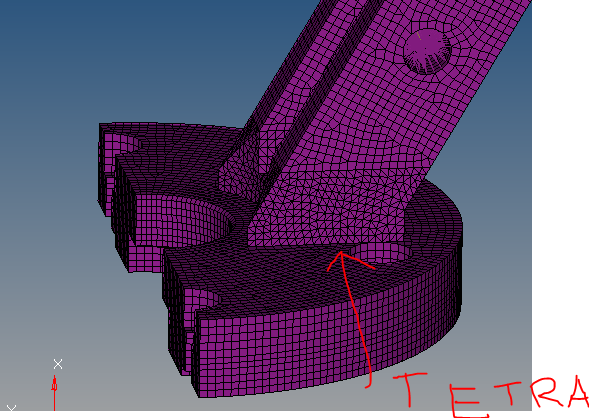Hi. I had to mesh a component. I cut the solid in some parts and I meshed one of them with tetra elements (as you can see in the photo) because I wasn't able to mesh it using exa elements. I meshed the remaining parts with exa elements. Does it make any sense to mesh some parts with tetra and other ones with exa? Should I have meshed the whole component with tetra elements? Thank you.
<?xml version="1.0" encoding="UTF-8"?>